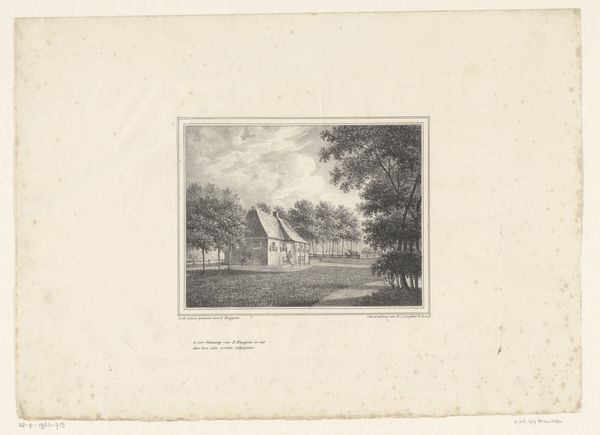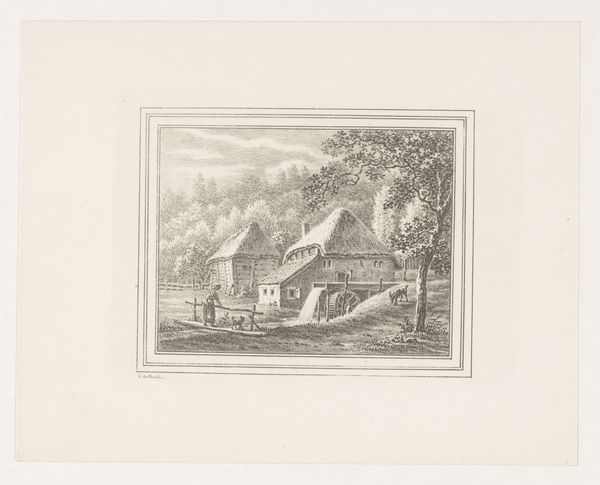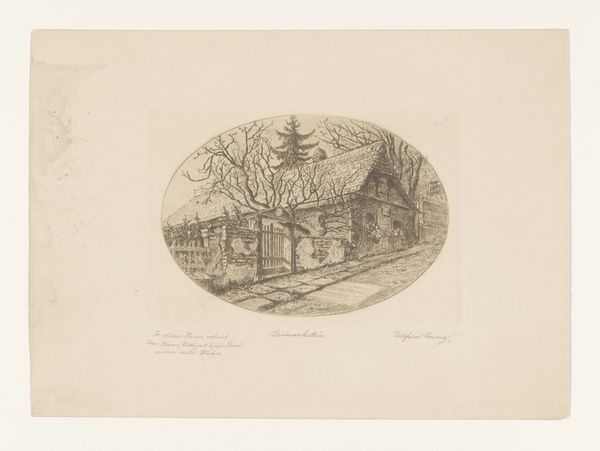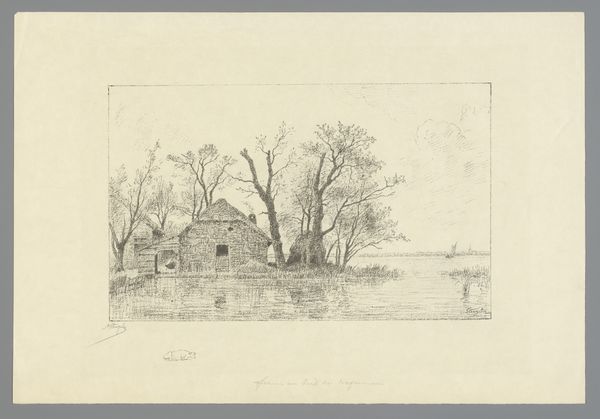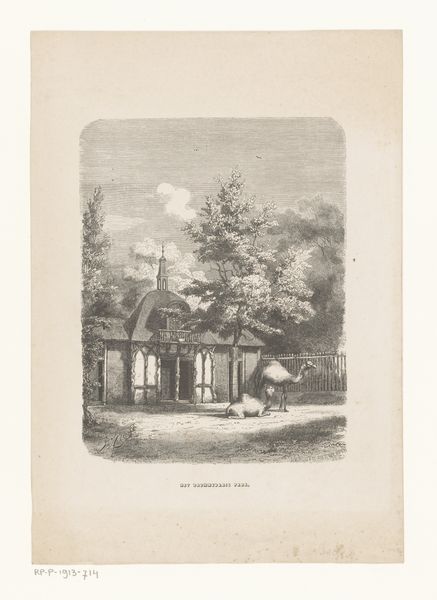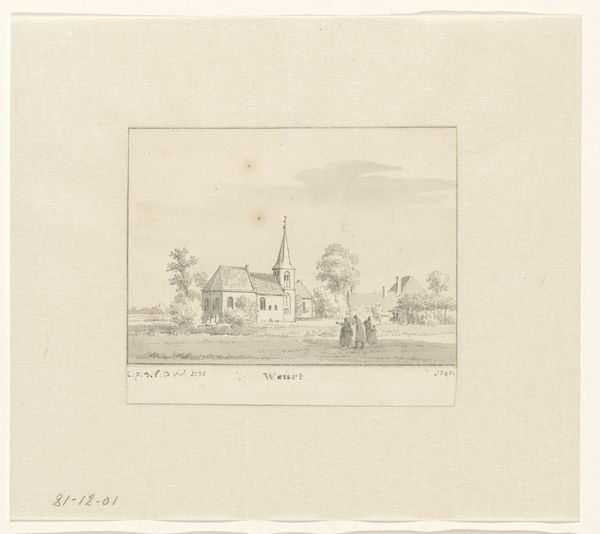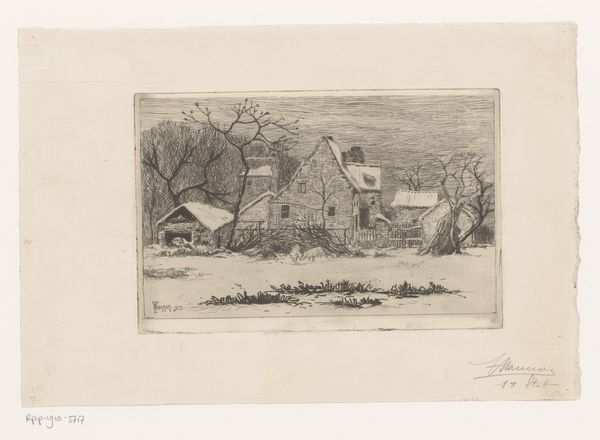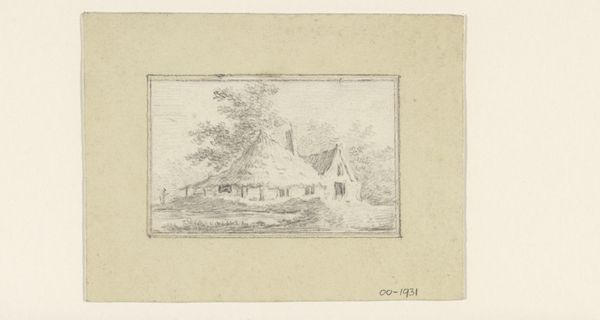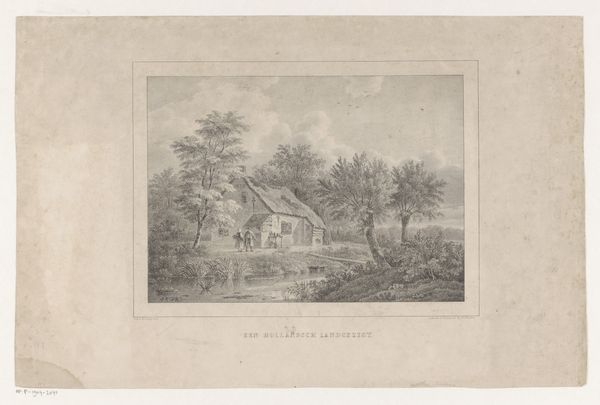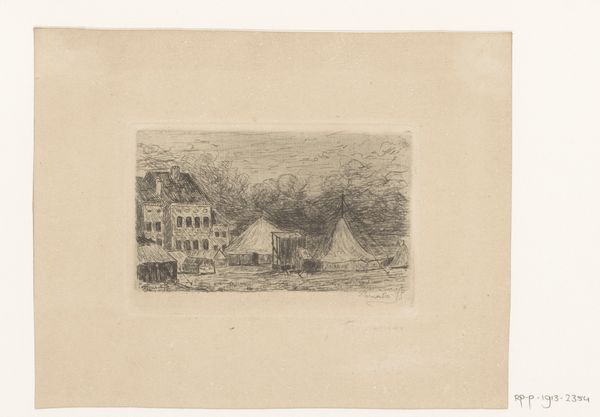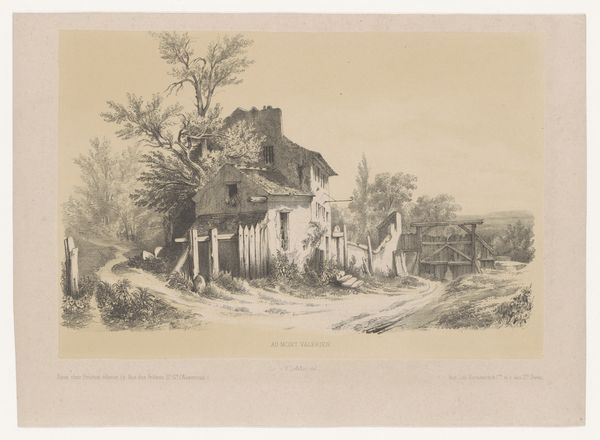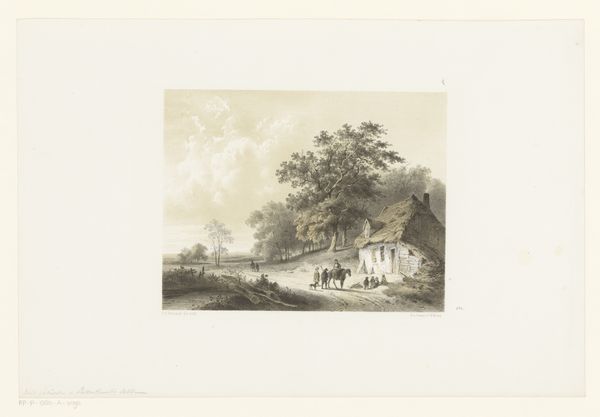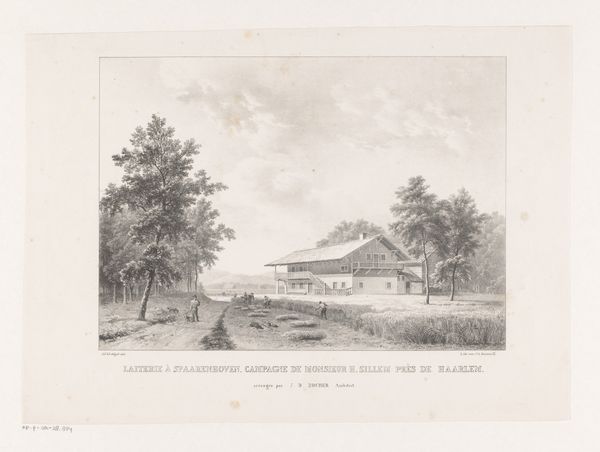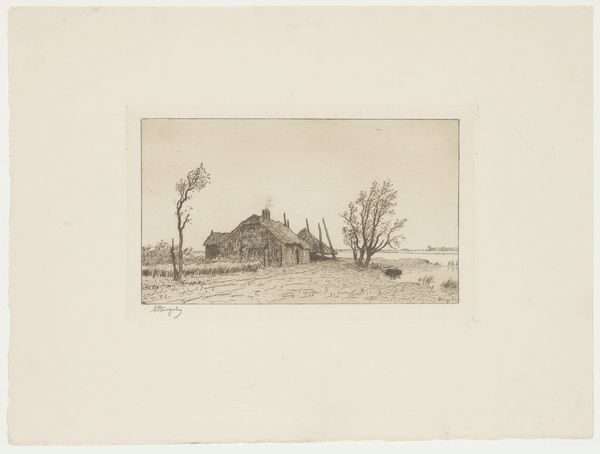
drawing, etching
#
drawing
#
etching
#
landscape
#
etching
#
forest
#
romanticism
#
line
#
realism
Dimensions: height 205 mm, width 263 mm
Copyright: Rijks Museum: Open Domain
Editor: So, here we have Gerrit Jan Michaëlis' "Boerderij in het bos," made sometime between 1809 and 1857. It's an etching, and it strikes me as quite serene, almost a nostalgic scene of rural life. What draws your eye when you look at it? Curator: I see a layered narrative deeply embedded in Romanticism's idealization of nature, yet hinting at underlying social realities. Consider the isolated cottage. It appears picturesque, but might also symbolize the harsh realities of rural poverty and social exclusion of the period. The lone figure on the path... is that individual embracing or escaping rural life? Editor: That's interesting. I was focused on the aesthetic quality and the light, not necessarily any hidden critique. What makes you say that about the potential for critique? Curator: The period, first of all. This was a time of significant social upheaval, with increased industrialization pushing many rural communities to the margins. Romanticism often glossed over such issues, but art frequently offered a subtle counter-narrative. Also, notice how the house, while quaint, is rather run-down. The forest itself could be interpreted as both a source of sustenance and a space of alienation. Are we celebrating nature or acknowledging a social divide? Editor: I hadn’t considered the social implications so directly. I see your point about the tension. Curator: It's important to remember that art doesn't exist in a vacuum. Exploring those dualities-- the beautiful versus the brutal—helps us understand both the artist’s intent and the larger societal conversation happening at that time. Editor: This definitely offers a new lens through which to consider landscape art. Thanks for sharing that perspective. Curator: My pleasure. Looking closely, questioning assumptions—that’s how we truly engage with art’s power.
Comments
No comments
Be the first to comment and join the conversation on the ultimate creative platform.
